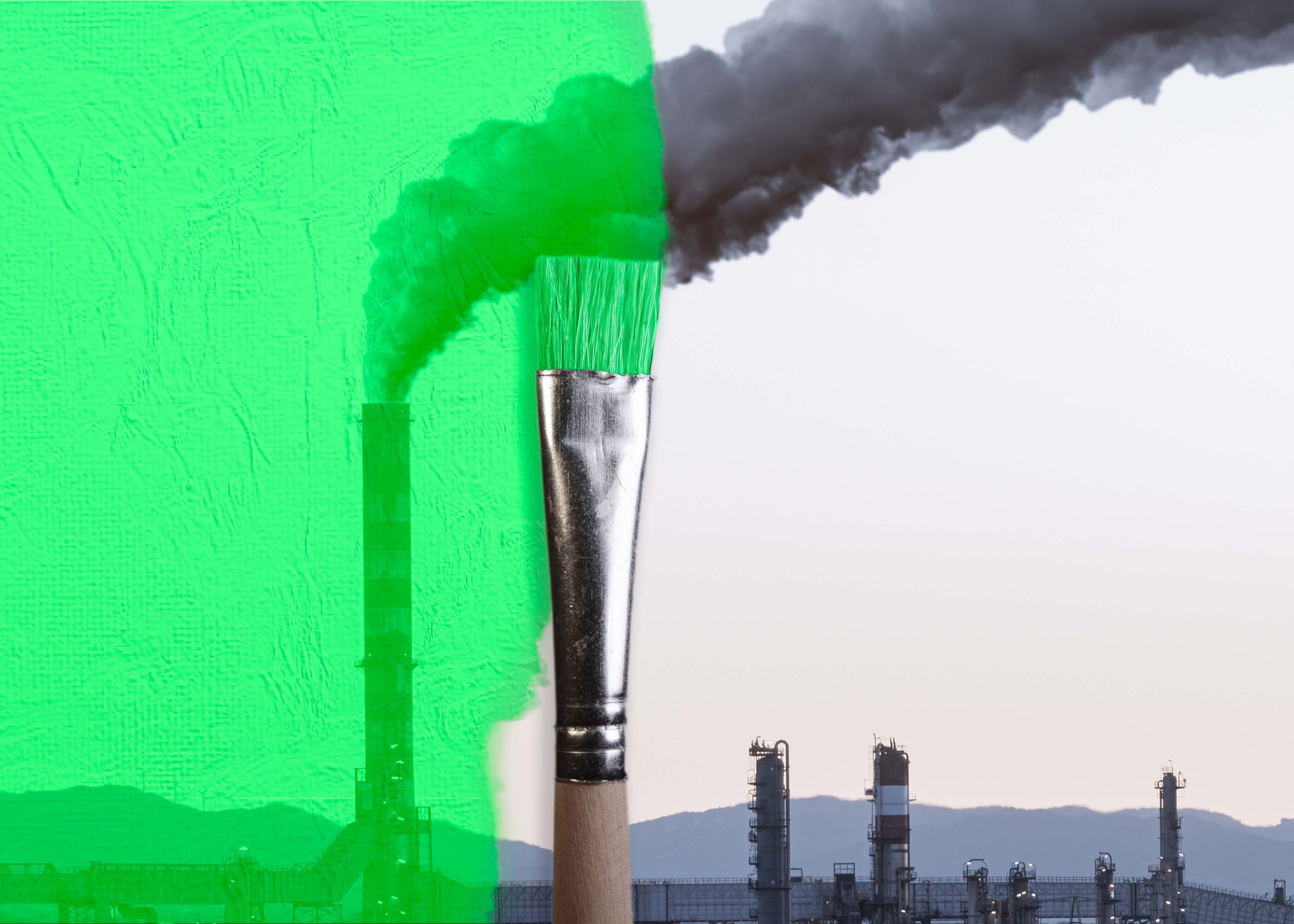All Blogs, Image Management, Public Relations Industry, Thought Leadership
From PR to Planet: Why greenwashing won’t save the earth

The WHO announced in 2019 that they expect 250,000 more deaths per year from climate change through malnutrition, malaria, and heat stress between 2030 and 2050. As we get closer to irreversible climate damage, we can clearly see the effect it will have on our everyday lives. For example, just weeks ago, New York experienced the worst air quality ever in U.S. history. This is just one of many events, such as the California wildfires and the 2014 Midwest Polar Vortex, that illustrate the wide-ranging impacts of climate change on the U.S. As we continue to see drastic changes to our environment, there has been a consistent shift in public attention towards the climate crisis. As it becomes more of a social issue, corporations have taken to the media to maintain their image and so-called “commitment” to environmental safety.
Household names from Starbucks to JP Morgan Chase to H&M all boast “climate consciousness” and take advantage of the many positive PR opportunities associated with taking a stand for the environment. This is known as greenwashing, a tactic in which big organizations win over customers by creating an image of being environmentally friendly.
Five years ago, Starbucks released their popular “straw-less lid” to reduce plastic waste and improve the safety of aquatic life, mainly sea turtles. Though this new lid reduced the number of plastic straws in circulation, it used greater amounts of plastic than the previous straw-based design. Starbucks representatives rebutted outcries around this by claiming that the new polypropylene material is a more commonly accepted form of recyclable plastic, though critics identified that only 9% of plastic is recycled globally. Starbucks capitalized on a PR opportunity to “save the turtles” but traded one form of the plastic for another.
H&M is among many clothing and fashion brands that take part in greenwashing as well. It has been shown that only 20% of textiles are reused or recycled. The remaining 80% are incinerated or given a lifetime sentence in a landfill. H&M has recently released its “Conscious” line that contains a selection of sustainable clothing, though this is mere marketing terminology as there is no “sustainable” standard to be followed. H&M has not provided sufficient data to back its sustainability statement and has been publicly criticized by the Norwegian Customer Authority.
These two examples exemplify the marketing manipulation corporations undertake to meet consumer demands of eco-consciousness. However, there is yet another story to be told on the monetary front. Billion-dollar banks such as JP Morgan Chase, Bank of America and Goldman Sachs, are some of the many banks that have issued green investment protocols in support of opportunities that combat the climate crisis. Despite these protocols, these same banks are major funders of the industries that most negatively impact climate change such as fossil fuels and deforestation. These banks and corporations attempt to paint themselves as leaders of the go-green transition in the eyes of the public, though, in the depths of their operations, they act otherwise.
Corporations want to look good in the media and are willing to do so by any means necessary. They will prioritize a good PR opportunity over making an impact. We often fail to read between the lines and hold these companies to the standard they publicly set for themselves.
Here are three ways that we, as PR practitioners, can hold these companies accountable, develop quality campaigns, and be agents for change:
- Only act from an informed place. To avoid having to backtrack, only create a plan of action once you have a comprehensive set of information. For example, if Starbucks genuinely wanted to reduce plastic use, they could have used seaweed or paper straws – a much more sustainable option. Talk to experts in the field and develop a plan that would produce real change, while also making for a relevant story. There is a way to marry both parties, with substance always being the most important part of your campaign.
- Be a leader - or even better, a trendsetter. People will want to follow companies who are in tune with current events. Create initiatives that draw consumers in just by engaging with the issues that matter. Focus on the long-term goals, rather than the short-term gains.
- Create transparent, authentic campaigns. It is important to build a level of trust between you and your consumers. Start with a transparent, authentic approach. Pure intentions that are clearly communicated to your audience will solidify your relationship with your customer base and stakeholders and ultimately help support your brand reputation.
Billion-dollar corporations have consistently used loopholes to push campaigns that look good in the media, while still maintaining practices that are inconsistent with their supposed values. This then translates into the public assuming they are climate positive, but it is often just a façade to generate good press and business. As PR professionals we must hold our clients to a moral standard and ensure that through the campaigns we help create, the result is purposeful and well-educated. By following these three tactics and learning from other mistakes, we can work alongside these larger corporations to make a real impact on our climate.

